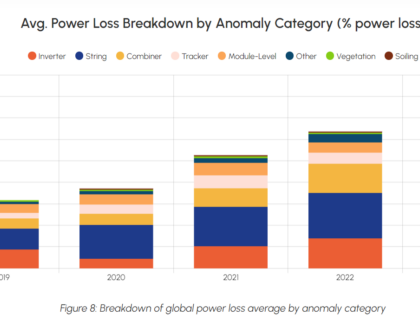FAIRBANKS, Alaska (KTVF) – Tanana Chiefs Conference (TCC) will head a multi-million dollar effort to develop the biggest tribally-owned Independent Power Producer in the state.
It’s one of five Alaska projects federal officials chose for the purpose of improving energy resiliency and affordability in remote communities.
Of the $1 billion available, run through the U.S. Department of Energy’s (DOE) Energy Improvement in Rural or Remote Areas (ERA) program, Alaska projects are receiving a maximum of $125 million.
Allotted up to $26 million itself, the TCC project endeavors to install solar energy systems and battery storage into the existing grids of eight remote tribal communities. Those include Nulato, Huslia, Minto, Kaltag, Grayling, Anvik, Shageluk and Holy Cross.
“To say we were jubilant would be an understatement,” TCC Community Infrastructure and Planning Director Dave Messier said of getting the funds in a Wednesday phone interview.
“Projects in rural Alaska are really hard to find funding for and make happen even though the need is there because if you try to finance them in a typical way, there’s just not enough customers to amortize the costs out over,” he added.
All eight communities rely entirely on diesel for energy production in their isolated microgrids. By adding solar, the upgrades aim not only to integrate renewables into the system but also to diversify production, thereby bolstering reliability and resiliency.
The ERA announcement says ratepayers in the communities currently face bills more than four times the national average. Messier wasn’t sure how substantially individual rates will reduce but was optimistic the diversification would level out fluctuations in the prices.
“Hopefully we can use these projects to stabilize rates,” he said.
Messier added energy consumers in the eight communities can sometimes pay as much as 90 cents per kilowatt-hour. Golden Valley Electric Association, for comparison, just bumped rates for its members to a little under 17 cents per kilowatt-hour, effective March 1.
Projections have the changes saving a collective $100,000 each year for consumers in the eight communities and generating a net income of $150,000 annually under the tribal ownership model. The federal dollars will also go toward providing related job training to members of the eight communities.
According to Messier, this project takes a logical next step after the success of other, smaller projects.
“We’ve progressed along this path of installing these smaller, kind of residential grid-type systems over the last decade plus,” he said.
Those experiences, for Messier, showed TCC they had to kick it up a notch if they were going to take a chunk out of diesel use in remote communities.
“We need to make these projects a lot bigger, and we need to combine them with batteries so that we’re able to use the batteries turn the diesel off, to store solar, and to make the system all work together,” he said.
Messier further explained solar has proved the best fit for remote communities on the smaller-scale projects but expected battery integration to bring new challenges along with the upsides.
“Alaska’s no stranger to battery technology, but in these remote microgrid applications, it’s still kind of new, so we want to make sure that we’re there as the Independent Power Producer to support our tribes to make sure that the systems are maintained long-term,” he said.
As for what happens next, TCC still needs to wrap up negotiations with DOE and then enter environmental review. After that stage comes design, purchasing, shipment and the final construction phases.
“There’s a long road of ahead of us. It’s kind of like shooting a moose: the easiest part is pulling the trigger,” Messier said.
In a Wednesday release, TCC estimated installation will span a five-year period. Backers hope the grid diversification will reduce diesel consumption by 40%.
“One of our priorities as an organization is to foster Tribal sovereignty, empowering our people with the resources to raise their families, run their businesses and provide a future for their communities” said Chief and Chairman of TCC Brian Ridley in the release.
In a joint news release Tuesday, Alaska’s senators praised the U.S Department of Energy’s selection of projects in the state set to receive funding.
“I see the opportunities we have to utilize more of our local resources, the hardships that high energy costs cause across our state, and pushed this innovative program as a way to tackle both,” Sen. Murkowski (R-Alaska) said in the release.
Alaska’s junior senator echoed that sentiment.
“This major investment — a result of our work in the Infrastructure, Investment & Jobs Act — will fund hydroelectric facilities, battery storage, transmission lines, and other energy infrastructure that will ultimately reduce costs and increase resiliency for Alaskans in Chignik Bay, Old Harbor, Nulato, Huslia, Kaltag, Grayling, Anvik, Shageluk, Holy Cross, Angoon, and villages across the Northwest Arctic Borough,” Sen. Sullivan (R-Alaska) said in the release.
The other four entities chosen for funding alongside TCC include up to $55 million for the Northwest Arctic Borough, $27 million for Alaska Native Village Corporation Kootznoowoo, Inc., up to $10 million for the Alutiiq Tribe of Old Harbor and up to $7.2 million for the Lake and Peninsula Borough.
More about the projects for which that money will be used can be found here.
Copyright 2024 KTVF. All rights reserved.
This post was originally published on 3rd party site mentioned in the title of this site






